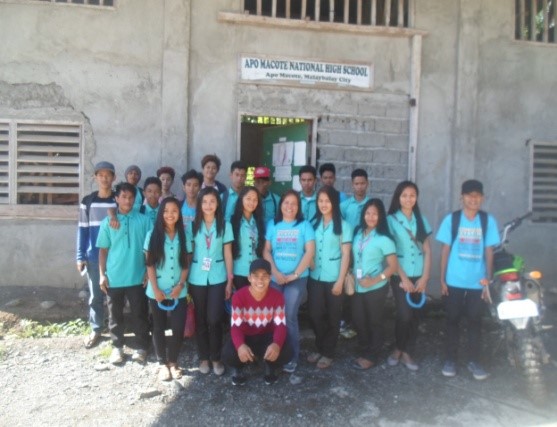Where does communicative language teaching come from?
Its origins are many, insofar as one teaching methodology tends to influence the next. The communicative approach could be said to be the product of educators and linguists who had grown dissatisfied with the audiolingual and grammar-translation methods of foreign language instruction. They felt that students were not learning enough realistic, whole language. They did not know how to communicate using appropriate social language, gestures, or expressions; in brief, they were at a loss to communicate in the culture of the language studied. Interest in and development of communicative-style teaching mushroomed in the 1970s; authentic language use and classroom exchanges where students engaged in real communication with one another became quite popular. In the intervening years, the communicative approach has been adapted to the elementary, middle, secondary, and post-secondary levels, and the underlying philosophy has spawned different teaching methods known under a variety of names, including notional-functional, teaching for proficiency, proficiency-based instruction, and communicative language teaching.
What is communicative language teaching?
Communicative language teaching makes use of real-life situations that necessitate communication. The teacher sets up a situation that students are likely to encounter in real life. Unlike the audiolingual method of language teaching, which relies on repetition and drills, the communicative approach can leave students in suspense as to the outcome of a class exercise, which will vary according to their reactions and responses. The real-life simulations change from day to day. Students’ motivation to learn comes from their desire to communicate in meaningful ways about meaningful topics. Margie S. Berns, an expert in the field of communicative language teaching, writes in explaining Firth’s view that “language is interaction; it is interpersonal activity and has a clear relationship with society. In this light, language study has to look at the use (function) of language in context, both its linguistic context (what is uttered before and after a given piece of discourse) and its social, or situational, context (who is speaking, what their social roles are, why they have come together to speak)” (Berns, 1984, p. 5
What are some examples of communicative exercises?
In a communicative classroom for beginners, the teacher might begin by passing out cards, each with a different name printed on it. The teacher then proceeds to model an exchange of introductions in the target language: “Guten Tag. Wie heissen Sie?” Reply: “Ich heisse Wolfie,” for example. Using a combination of the target language and gestures, the teacher conveys the task at hand, and gets the students to introduce themselves and ask their classmates for information. They are responding in German to a question in German. They do not know the answers beforehand, as they are each holding cards with their new identities written on them; hence, there is an authentic exchange of information.
The following exercise is taken from a 1987 workshop on communicative foreign language teaching, given for Delaware language teachers by Karen Willetts and Lynn Thompson of the Center for Applied Linguistics. The exercise, called “Eavesdropping,” is aimed at advanced students.
Instructions to students: Listen to a conversation somewhere in a public place and be prepared to answer, in the target language, some general questions about what was said.
- Who was talking?
- About how old were they?
- Where were they when you eavesdropped?
- What were they talking about?
- What did they say?
- Did they become aware that you were listening to them?
The exercise puts students in a real-world listening situation where they must report information overheard. Most likely they have an opinion of the topic, and a class discussion could follow, in the target language, about their experiences and viewpoints.
Communicative exercises such as this motivate the students by treating topics of their choice, at an appropriately challenging level.
Another exercise taken from the same source is for beginning students of Spanish. In “Listening for the Gist,” students are placed in an everyday situation where they must listen to an authentic text.
Objective: Students listen to a passage to get general understanding of the topic or message.
Directions: Have students listen to the following announcement to decide what the speaker is promoting.
Passage: Situacion ideal . . . Servicio de transporte al Aeropuerto Internacional . . . Cuarenta y dos habitaciones de lujo, con aire acondicionado . . . Elegante restaurante . . . de fama internacional.
(The announcement can be read by the teacher or played on tape.) Then ask students to circle the letter of the most appropriate answer on their copy, which consists of the following multiple-choice options:
a. a taxi service b. a hotel c. an airport d. a restaurant
(Source: Adapted from Ontario Assessment Instrument Pool, 1980, Item No. 13019)
Gunter Gerngross, an English teacher in Austria, gives an example of how he makes his lessons more communicative. He cites a widely used textbook that shows English children having a pet show. “Even when learners act out this scene creatively and enthusiastically, they do not reach the depth of involvement that is almost tangible when they act out a short text that presents a family conflict revolving round the question of whether the children should be allowed to have a pet or not” (Gerngross & Puchta, 1984, p. 92). He continues to say that the communicative approach “puts great emphasis on listening, which implies an active will to try to understand others. [This is] one of the hardest tasks to achieve because the children are used to listening to the teacher but not to their peers. There are no quick, set recipes. That the teacher be a patient listener is the basic requirement” (p.98).
The observation by Gerngross on the role of the teacher as one of listener rather than speaker brings up several points to be discussed in the next portion of this digest.
How do the roles of the teacher and student change in communicative language teaching?
Teachers in communicative classrooms will find themselves talking less and listening moreËbecoming active facilitators of their students’ learning (Larsen-Freeman, 1986). The teacher sets up the exercise, but because the students’ performance is the goal, the teacher must step back and observe, sometimes acting as referee or monitor. A classroom during a communicative activity is far from quiet, however. The students do most of the speaking, and frequently the scene of a classroom during a communicative exercise is active, with students leaving their seats to complete a task. Because of the increased responsibility to participate, students may find they gain confidence in using the target language in general. Students are more responsible managers of their own learning (Larsen-Freeman, 1986).














